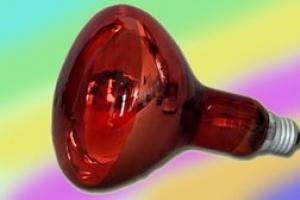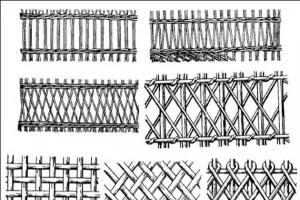The fact that there is no dispute about tastes is most clearly proven by some representatives of the animal world who have switched to rather strange food items.
Take bee moth larvae, for example. These small creatures living in a bee's nest do not feed on honey, but... wax. Moreover, they like this difficult-to-digest substance so much that the larvae often completely destroy the hive, having eaten all the wax. It would seem that the animals must die. And here the most interesting thing in the biology of these larvae begins: they begin to feed on their own excrement, which by this time accumulates in abundance. When the supply of old excrement is depleted, the larvae are mistaken for new excrement, which is also quite edible.
In this way, bee moths can survive for several generations by eating their own excrement. Sometimes this unusual cycle can continue for 7-8 years.
What explains this incredible method of extracting energy resources, which has something in common with perpetual motion machine, quite simple. Wax is a substance that is difficult to digest. And even in the intestines of bee moths, which have adapted to feeding exclusively on this product, the wax is never completely destroyed. This explains the high efficiency of repeated processing of one’s own excrement.
But bee moths are not the only consumer of wax. Honeyguides, birds that live mainly in Africa, the Himalayas and the islands of Indonesia, also feed on it.
It turns out that microorganisms help birds use wax as food, which digest the wax, converting it into compounds that the bird’s body is able to absorb.
But since wax is a product produced by bees, it is therefore found only in the homes of these insects. So the honeyguide managed to enter into cooperation with the badger honeyeater.
Having found a bee's nest, the bird goes to the badger's hole and begins to loudly proclaim its luck. And the badger immediately guesses why there is such a loud noise: he quickly climbs out of the hole and, with all his might, rushes after the honey guide. And the bird flutters from branch to branch and screams loudly.
When the friendly couple reaches the bee settlement, the badger immediately gets down to business: it destroys the nest and gorges itself on honey. And, having had enough, he moves away.
Now the honey guide can eat to his heart’s content: he doesn’t get lost, but begins to eat the honeycombs with appetite.
Bones are also an equally difficult food to digest. But some organisms did not ignore them either. For example, marine deep-sea worms, which. lacking eyes, mouth, teeth and stomach. Paradox? Can these organisms really handle bone, and whale bone at that?
It turns out that these worms have numerous processes that, like the roots of a plant in the soil, grow into the bones of dead giants and eat them without a trace. In addition, they are greatly helped by the bacteria that live on these peculiar “tentacles”.
Considering such an original food source, zoologists even introduced a new genus for these worms into the taxonomy - osedax, which in Latin means “bone eaters”.
The bearded vulture, a bird of prey from the hawk family, also feeds on bones: its diet consists of 90 percent bones. This bird lives in the mountains of Southern Europe, Eastern and South Africa and Asia. The bearded vulture does not have any special devices for feeding on bones, except for a very elastic esophagus that passes bones up to 25 centimeters long and up to 4 centimeters in diameter. Moreover, his stomach is rich in cells that secrete hydrochloric acid. Since there is fatty bone marrow inside the bones, and nutritious protein is released from the bone itself after the mineral base is dissolved, it turns out that bones are more nutritious than the same amount of meat by weight.
Some eat wax, some eat bones, but some animals, such as hares, have a strange tendency to eat their own excrement. But this incredible habit, called coprophagia, is completely legal and necessary element in the behavior of lagomorphs.
It turned out that in the hare, rabbit and pika, at the first stage of digestion, food, passing through the intestines, is saturated with some special substances that are produced by bacteria living in the cecum. Then this “waste”, rich in vitamins and bacterial flora, is re-consumed by animals. For these purposes, the animals even arrange two latrines, one of which is also a place for eating.
It turned out that American orioles, or troupials, birds that have the same habits as our cuckoos, willingly eat fecal capsules secreted by the chicks of those birds in whose nests they laid their eggs. Zoologists often noticed how the corpse chased the chick until it released the long-awaited capsule.
However, since the fecal masses of chicks are enriched with vitamins, birds and a number of other species try not to throw the feces of their offspring out of the nest, but eat them on the spot. And, as if for the convenience of parents and for hygiene purposes, the babies’ secretions are enclosed in a special shell.
But the moth that lives in Madagascar loves to feast on it. tears of birds. She puts a proboscis under the eyelids of sleeping birds, which looks like a miniature harpoon, and drinks their tears.
However, butterflies and moths, which use tears as a source of food, are already known to zoologists, but they suck tears from the eyes of large and calm animals: deer, antelope or crocodiles. It is clear that it is preferable for insects to deal with such animals, since, for known reasons, they cannot drive insects away from their eyes.
But not when they fall asleep. It was this moment in the life rhythm of the feathered moths that took advantage.
Even the fact that sleeping birds close their eyes with two eyelids did not stop her. A special device of the proboscis helped her in this. She does not have a flexible and soft “straw”, like her other relatives who drink the tears of mammals. The Madagascan moth's proboscis is equipped with hooks and teeth, which help get to the treasured tears.
Parrots living in Peru can also be called record holders in the “most original menu” category. Every morning they flock to the steep bank of the Rio Manu River, a tributary of the Amazon, and begin to peck at the ground. And not all of it, but only a strictly defined layer of sediment.
It turned out that this soil is necessary for parrots to neutralize the poisons contained in their usual food: grains and fruits tropical plants, which, especially immature ones, contain a lot of alkaloids and other toxins. It is clay minerals - particles of kaolin, smectite and mica - in the stomach of birds that transform these poisons into compounds neutral for the body. During experiments, scientists have proven that the soil beloved by parrots reduces the toxicity of extracts of those fruits that serve as constant food for birds by 60-70 percent.
Many people know that cockroaches are omnivorous. The diet of these insects may contain a variety of substances and materials: for example, soap, petroleum jelly, and even... shoe cream And they can quench their thirst with ink. And all this chemistry does not harm the cockroach’s body at all: its stomach grinds everything that gets there. And this is due to the fact that in its stomach there are chitinous teeth that grind solid food into microscopic particles.
But an inhabitant of South America - a large, five-fingered whistling frog, about twenty centimeters long - feeds on snakes. Moreover, sometimes this amphibian devours even one and a half meter reptiles. And the whistler attacks snakes not only when he is hungry, but simply like that, as if taking revenge for the death of his fellow frogs.
Making a swift lunge at the snake, the whistler tries to swallow the head and most body of a snake so that the poisonous reptile would quickly suffocate in his stomach.
Otherwise, the snake may free itself from the deadly embrace of the bulldog's jaw, and then the whistler will inevitably pay with his life.
But if the whistler also satisfies its hunger with other animals, then the false snake, or clelia, which lives in South America, called the mussurana by the local population, hunts exclusively on its relatives - other snakes. As soon as this reptile, which is about two and a half meters long, senses the close presence of another snake, it immediately rushes after it. And she is absolutely not interested in the type and size of the snake.
The strength and speed of her attacks are amazing. Under any circumstances, in an elusive throw she manages to grab the victim in the back of the head or neck. In addition, for greater reliability, she also wraps her prey in many coils of her muscular body. After this, the clelia pushes the upper jaw forward as far as possible and sinks its venom-bearing teeth into the snake’s neck. But execution is not limited to poison.
To hasten the death of the victim, the clelia violently shakes the snake, breaking its spine. And only after that it eats the victim, swallowing it whole. Sometimes the objects of attack of the mussuran are snakes that are one and a half times longer than itself.
If, in the heat of battle, the victim manages to bite the clelia, she will not die. Her excellent immunity saves her from death.
But Clelia is not the only snake that feeds on relatives. Other reptiles are not averse to profiting from blood brothers. For example, many representatives of the supper family eat snakes: snakes, copperheads. And the lizard snake prefers vipers to any other prey: it can swallow three in an hour.
Consists almost entirely of snakes and the king cobra menu. It feeds on ordinary cobras, and sometimes swallows, after killing, medium-sized monitor lizards.
A dangerous enemy of many snakes, including cobras, but not king cobras, is the pama, or ribbon krayat - a one and a half meter reptile, common in Indochina, Java and Sumatra. In the dark, this snake acts boldly and energetically. Having killed the victim with poison, it swallows it whole.
Some birds and mammals also chose snakes as objects of hunting. For example, the plantain bird living in Mexico. She has strong muscular legs, a long tail and a strong beak. The plantain preys on lizards, small rodents and insects, but is especially famous for its victories over rattlesnakes. Seeing the snake, the plantain grabs it and, without allowing it to come to its senses, begins to thrash it on the ground.
The secretary bird is also considered a snake fighter. She received this name because the crest on her head resembles a goose feather sticking out, like in the old days, behind a scribe’s ear.
On the other hand, a small burrowing snake, which zoologists call Leptotyphlops phenops, feeds only on the contents of the abdomen of termites, which, apparently, is sucked out, leaving only a chitinous shell. In addition to amazing selectivity, there is also the only case among snakes of feeding on part of the prey.
But some living beings have switched to a diet that is radically different from that of all their relatives. For example, a butterfly was discovered that satisfies its hunger not with nectar, but with blood. True, only males drink blood. Females feed on the juice of plants and fruits.
On the other hand, a spider was discovered in tropical forests - Bagheera kiplingi, which feasts on small shoots on the tips of the leaves of some types of acacias, that is, it is a consumer of plant food.
And here is another curious phenomenon from the “most original tastes” category. The fact that a diurnal predator from the hawk family, the honey buzzard, in addition to insects, small reptiles and amphibians, also feeds on bees, bumblebees and wasps, is not particularly surprising. But it turns out that in the stomach of the honey beetle, all these stinging creatures are deprived of their poisonous stylet.
At first, zoologists assumed that the buzzard, before eating the wasp, simply bites off its stinging end. But observations refuted this assumption: it swallows with a sting. But when they opened the stomach, they were amazed by what they saw: the wasps turned out to be without stingers!
What's the matter? - no one knows yet.
Another diurnal predator - the royal vulture - eats such rotten carrion that another animal, after such a dinner, would undoubtedly go to its forefathers. The whole point is that the glands of these birds secrete juices that neutralize cadaveric poison.
By the way, armadillos also love juicy, fragrant, half-rotten carrion more than anything else.
For a long time, scientists did not believe that hedgehogs milk cows, considering such a statement to be fables of farmers. But, as German zoologists have established, in fact, hedgehogs still commit such a sin: they milk cows, especially lying ones! Moreover, they not only lick off individual random drops, but also stimulate lactation by tingling the udder.
But some shrews have become famous for their ability to drink. Thus, the tree shrew from Malaysia at dusk climbs onto a palm tree and drinks fermented nectar from the flowers, which contains 3.8% alcohol. And at the same time, the animal does not get drunk, although it consumes this drink in huge quantities in relation to its own weight.
But perhaps the most exotic taste is demonstrated by some locusts: they eat. themselves. Insensitive to physical pain, they eat their front paws. Moreover, as experiments have shown, it is not the feeling of hunger that pushes insects to take such an unusual step. It’s just that their own body seems to them the most delicious food. Starting from the paws, the locust can feast on other parts of the body.
From the book “100 Great Animal Records”, author Anatoly Bernatsky
April 28Biologists have made a big discovery. It turns out that ordinary caterpillars, which are often bred as fish bait, have a much more valuable property. They can recycle polyethylene, one of the most durable and commonly used types of plastic, which litters landfills and the world's oceans everywhere. Polyethylene and polypropylene account for 92% of global plastic production, including 40% of polyethylene. Every year people use and throw away trillion plastic bags.
These caterpillars are the larvae of the common insect Galleria mellonella (great wax moth). The animal is considered a pest because it lays larvae in honey bee hives. There, the caterpillars feed on honey, pollen and wax (hence the name moth), damaging everything around: honeycombs, brood, honey reserves, bee bread, frames and insulation material hives. But still, these harmful caterpillars found useful application. Instead of wax, they can be fed plastic waste.
Plastic is one of the most dangerous materials in terms of littering the planet. In terms of the combination of prevalence and duration of natural decomposition, it has almost no equal. For comparison, paper decomposes in nature from one month to three years, clothes made of wool - a year, clothes made of natural fabrics - two to three years, an iron can - 10 years, but an ordinary plastic bag decomposes in 100-200 years. Among all types of waste, polyethylene is second only to aluminum cans (500 years), disposable diapers (300-500 years) and glass bottles(more than 1000 years).
Over the past 50 years, plastic production has grown exponentially. In the European Union, despite all efforts to recycle waste, up to 38% of plastic ends up in landfills, the rest is recycled (26%) or incinerated (36%). When burned or buried in a landfill, polyethylene creates a serious burden on the environment, so scientists are intensively searching for acceptable ways to harmlessly degrade plastic. Using great wax moth caterpillars is one great option.

Scientists estimate that the rate of polyethylene biodegradation by wax moth caterpillars is much higher than that of plastic-eating bacteria reported last year. Those bacteria could eat 0.13 mg per day, and the caterpillars devour the material literally before our eyes. In the photo above you can see that we made 10 caterpillars with the bag in just 30 minutes.
Federica Bertocini contacted colleagues from the Department of Biochemistry at the University of Cambridge - and together they set up an experiment for a while. About a hundred caterpillars were placed in a regular plastic bag from a British supermarket. Holes in the bag began to appear after 40 minutes, and after 12 hours the mass of plastic had decreased by 92 mg!

Scientists have yet to study the details of the biodegradation of wax and plastic, but it appears that the caterpillars in both cases break down the same chemical bonds between molecules (CH²−CH²) in the substance. By chemical formula and its properties, wax is a polymer, something like “natural plastic”, and its structure is not much different from polyethylene.

Scientists carried out spectroscopic analysis and checked how the caterpillars break down chemical bonds in polyethylene. They found that the result of processing is ethylene glycol, a dihydric alcohol, the simplest representative of polyols. The analysis proved that the holes in the plastic bag are not the result of simple mechanical chewing of the material, but that there is actually a chemical reaction and biodegradation of the material. To be 100% sure of this, biologists conducted a scientific experiment: they crushed caterpillars into puree and mixed it with plastic bags. The result was identical - part of the plastic disappeared. This is the most convincing evidence that caterpillars do not just eat plastic, but digest it into ethylene glycol. Chemical reaction occurs somewhere in the animal's digestive tract - this may be the salivary glands or symbiotic bacteria in the esophagus. The corresponding enzyme has not yet been identified.
Lead author scientific work Paolo Bombelli is confident that if a chemical process is carried out using a single enzyme, then it is quite possible to reproduce this process using biochemical methods on a large scale. "This discovery could be an important means to eliminate polyethylene waste accumulated in landfills and the ocean," he says.
The scientific work was published on April 24, 2017 in the journal Current Biology.
In an experiment with bacteria, a film of 1 cm² of Ideonella sakaiensis bacteria processed 0.13 mg of polyethylene terephthalate (PET) per day.
Lizards belong to the class of reptiles. Their defining characteristics include a long tail, two pairs of legs that extend outward from the body, and scaly skin. Most lizards are cold-blooded animals and depend on environmental conditions to regulate their body temperature. There are many species of lizards distributed throughout the world. Different kinds lizards have different distinctive characteristics, which makes them interesting to study. Some of them even look prehistoric or like creatures from science fiction movies!
Gecko currents
Gecko currents ( Gekko gecko listen)) is a species of nocturnal reptiles belonging to the genus Gekko, found in Asia and also on some islands in the Pacific Ocean. The lekko gecko has a robust body, a large head, and strong limbs and jaws compared to other gecko species. This is a large lizard that reaches 30 to 35 centimeters in length. Although the lekka gecko camouflages itself with its surroundings, it usually has a grayish coloration with red spots. His body cylindrical and smooth texture. Lekka geckos are sexually dimorphic, which is reflected in the brighter color of males than females. They feed on insects and other small ones. Their strong jaws allow them to easily crush the exoskeleton of insects.
Marine iguana

Marine iguana ( Amblyrhynchus cristatu listen)) is a species of lizard found only in the Galapagos Islands of Ecuador, with each island home to marine iguanas different sizes and forms. IN Lately their populations are threatened by the large number of predators that feed on lizards and their eggs. Marine iguanas are marine reptiles that are often called ugly and disgusting due to their appearance. Contrary to their fierce appearance, marine iguanas are gentle. Their color is mainly black soot. Their long, flattened tail helps them swim, and their flat, sharp claws allow them to cling to rocks in the event of strong currents. Marine iguanas often sneeze to clear salt from their nostrils. In addition to sneezing, they have special glands that secrete excess salt.
Lesser belttail

Lesser belttails ( Cordylus cataphractus) lives in desert and semi-desert areas. They are mainly found along the west coast of South Africa. The lizards were used in the pet trade for a long time until they became endangered. The color of the lesser belttail is either light brown or dark brown, and the lower part of the body is yellow with dark stripes. They are diurnal reptiles that feed on small plants, as well as other types of small lizards and rodents. If the lizard senses danger, it inserts its tail into its mouth to form a spherical shape that allows it to roll. This form exposes the spines on its back, protecting the lesser belttail from predators.
Agama Mwanza

Agama Mwanza ( Agama mwanzae) are found in most sub-Saharan countries. They are usually 13-30 cm long, with males 8-13 cm longer than females. These lizards usually live in small groups with one male as the leader. The dominant male is allowed to breed, while other males cannot mate with females from the group unless they eliminate the dominant male or form their own group. Mwanza agamas feed on insects, reptiles, small mammals and vegetation. They mate during the rainy season. Before mating, the male digs small holes using his snout. After mating, the females lay eggs in the holes. Incubation period takes from 8 to 10 weeks.
Komodo dragon

Komodo dragon ( Varanus komodoensis) is the largest known species of lizard. They live on the Indonesian islands of Komodo, Rinca, Flores and Gili Motang. Mature monitor lizards weigh on average 70 kg and are about 3 meters long. Komodo dragons ambush a variety of prey, including birds, invertebrates, small mammals, and in rare cases, humans. Its bite is poisonous. The protein venom they inject when they bite can cause victims to lose consciousness, low blood pressure, muscle paralysis and hypothermia. Komodo dragons breed from May to August, and females lay eggs between August and September.
Moloch

(Moloch horridus) is mainly found in Australian deserts. It grows up to 20 cm and has a lifespan of 15 to 16 years. Its color is usually brown or olive. Moloch disguises himself in cold weather, changing the skin tone to a darker one. Its body is covered with spines for protection. The lizard also has soft fabrics, resembling her head. The tissues are located on the upper part of the neck and serve for protection, in which the spiny dragon hides its real head if it senses danger. Moloch has another amazing survival mechanism in the desert. His complex structure The skin, under the action of capillary force, helps to fuse water into the lizard's mouth. The main diet of the moloch consists of ants.
Arizona snaketooth

Arizona snaketooth ( Heloderma suspectum) is a poisonous species of lizard that lives in desert and rocky areas of Mexico and the United States. These reptiles have flattened triangular heads, which are larger in males than in females. Long, thick and cylindrical body, wider in females. Their diet consists of reptile eggs, birds and rodents. Hunting skills are characterized by a strong sense of smell and hearing. The Arizona eagle can hear the vibrations of its prey from afar and smell buried eggs. The large body and tail are used to store fat and water reserves, which allows them to survive in deserts. Dry and flaky scales prevent excessive loss of water from the lizard's body.
Parson's Chameleon

Parson's Chameleon ( Calumma Parsonii) is the largest chameleon in the world by mass. It is found in Madagascar. The large and triangular head has independently moving eyes. Males have two horny structures directed from the eyes to the nose. Females lay up to fifty eggs, which can incubate for up to 2 years. After hatching, young Parson's chameleons immediately become independent. Due to their unusual appearance, they are imported to other countries for pet keeping. However, most reptiles die during transport. Parson's chameleons are immobile animals that perform minimal movements only for feeding, drinking and mating.
Lobe-tailed gecko

Lobe-tailed gecko ( Ptychozoon kuhli) is found in Asia, especially in India, Indonesia, Southern Thailand and Singapore. They have unusual leathery growths on the sides of their bodies and webbed feet. They feed on crickets, waxworms and mealworms. These are nocturnal reptiles. Males are very territorial and difficult to cage. They camouflage themselves under the bark of trees, which helps them avoid predators. Lobe-tailed geckos live inside trees and jump from branch to branch, especially when they sense danger.
Rhinoceros iguana

Rhinoceros Iguana ( Cyclura cornuta) is an endangered species of lizard native to the Caribbean island of Hispaniola. They have a horn-like growth on their face, similar to the horn of a rhinoceros. The length of rhinoceros iguanas is 60-136 cm, and the weight ranges from 4.5 kg to 9 kg. Their color ranges from grayish to dark green and brown. Rhinoceros iguanas have large bodies and heads. Their tail is vertically flattened and quite strong. They are sexually dimorphic, and males are larger than females. After mating, females lay 2 to 34 eggs over 40 days. Their eggs are among the largest of any lizard.
If you find an error, please highlight a piece of text and click Ctrl+Enter.
To obtain pure beeswax, honeycombs freed from honey are cleaned by boiling in water. Wax, as a substance having a lower density, floats to the surface. The remaining honey dissolves in water. Foreign impurities settle to the bottom. The wax is extracted from the cooled water and is usually bleached. It can be bleached by exposure to the sun. To speed up this process, the wax is rolled into thin sheets. Industrial cleaning of wax is carried out using oxidizing agents (potassium dichromate, hydrogen peroxide), which are introduced into the molten wax. As a result of bleaching, the wax becomes not only lighter, but also more durable, hard, flexible, less brittle, and sometimes acquires the properties of leather.
Purified wax has a density of 0.95-0.97 g/cm 3 , a softening point of 37-38°C, and a melting point of 62-64°C. The large temperature interval from the beginning of softening to melting is the positive property that made possible use wax for creating plastic modeling compositions.
When cooled, the hardness of the wax increases, and at low temperatures it becomes brittle. Wax boils at 236°C. At different temperatures The coefficient of linear expansion of wax is different. In the range from 6 to 30°C it is equal to 3-.10-4, and at more high temperatures rises. This is one of the negative properties of wax. It affects the manufacture of parts that require great precision.
Beeswax dissolves well in fat solvents: gasoline, ether, chloroform, carbon tetrachloride/carbon disulfide, essential oils. Chemically, wax is inert.
In orthopedic dentistry, beeswax in its pure form is not used. It is used only for creating modeling compositions. Dental laboratories and orthopedic clinics need modeling materials with a variety of properties. Thus, for modeling half-crowns, inlays, and pin teeth, a material with a small range between the softening and melting temperatures, softening at a temperature of 45-50°C, is desirable.
Other requirements apply to modeling waxes used in the construction of removable denture bases. Creating wax bases requires more time; the modeling material has a significant surface of contact with environment and as a result it cools faster. Simulation under these conditions can only be carried out using a material that retains plastic properties over a much larger temperature range.
Modeling materials containing beeswax are characterized by increased plasticity. By changing the percentage of wax in the mixture, the temperature of its softening and melting is adjusted.
Stearin- a waxy material that is a product of the hydrolysis of animal fat. Chemical composition it includes stearic, palmitic and a number of other fatty acids. Pure stearin is a solid. Its density is 0.93-0.94 g/cm3. Stearin softens at 50-55°C, it melts at a temperature of about 70°C, and boils at 350°C.
Stearin dissolves in gasoline and chloroform. It has little plasticity and crumbles easily, revealing its fine-grained structure.
In its pure form, stearin can be used for modeling visual aids, dummies, models. It is introduced into various wax mixtures to reduce their plasticity and increase the melting point.
Stearin is part of the fatty base of polishing pastes. Having an enveloping ability, it weakens the effect of abrasive grains, and polishing is more gentle. At the same time, the paste remains on the polished surface longer.








